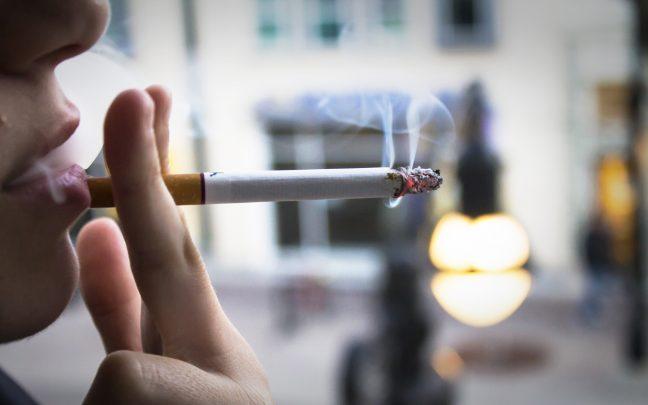African Americans, Native Americans and members of the LGBTQ+ community are more likely to smoke, according to an October 2016 report by Public Health Madison and Dane County.
While the percentage of adults in Wisconsin that smoke has decreased from 21 percent in 2011 to 17 percent this year, that number has decreased less dramatically for some populations, according to the Tobacco and Nicotine Free Living report.
Rates of smoking have disproportionately affected minorities. Dr. Bruce Christiansen, researcher at the UW Center for Tobacco Research and Innovation, said there are two major reasons for these effects. One is that minority populations often have less access to the health resources and education that have managed to reduce smoking in the general population.
Health care resources discourage people from using tobacco products and help reduce smoking rates. But minority populations often do not have these resources easily available to them, Christiansen said. This has resulted in significant decreases in smoking among people with resources while the less fortunate trail behind.
“The overall adult rate has fallen, but it has fallen much faster among the ‘haves’ versus the ‘have-nots’ [in terms of health care],” Christiansen said.
Other possible reasons for the difference in rates of tobacco use are more specific to different minorities, Christiansen said. Some minorities have different factors that lead to a higher rate of smoking.
Nina Gregerson, assistant coordinator for the Tobacco Free Columbia-Dane County Coalition, said one large factor is tobacco advertising that targets minorities.
Many stores and businesses in low socioeconomic neighborhoods sell tobacco products. Minorities that live in these neighborhoods are exposed to advertising that can promote smoking, especially to young adults and kids, Gregerson said.
Tobacco industry marketing has historically targeted African American and LGBTQ+ populations, Gregerson said. The tobacco industry targets these minorities with ad campaigns in magazines and at large festivals.
Additionally, some populations like the LGBTQ+ community have been drawn to smoking because of societal stresses. Christiansen said many LGBTQ+ individuals try to deal with stress that comes with being marginalized by society through smoking.
In the Native American population, smoking tobacco has been a part of their culture for centuries. This proves a balancing act of promoting cultural traditions as well as maintaining a healthy lifestyle, Christiansen said.
Christiansen said in order to reduce smoking nationwide, special focus has to be placed upon populations that are vulnerable to smoking.
“We are never going to get to national goals of 12 percent or 10 percent if we keep leaving [minority] populations behind,” said Christiansen.
Gregerson said Dane County needs to adapt programming and policy work to help populations that have been disproportionately impacted by smoking. It is important to address the root causes of smoking in order to change behavior, Gregerson said.
Christiansen said there has been a large effort to decrease smoking rates nationwide. Adding taxes to tobacco, advertising about harms of smoking, laws that ban smoking in public places and general stigmatization of smoking has affected the rate of smokers dramatically.
It was not until the late ’90s that smoking was seen as dis-proportionally affecting minorities. In 1998, Surgeon General David Satcher reported that a high number of minority citizens chose to smoke. After 18 years, the problem is still influencing many neighborhoods and communities.
Gregerson said to see the most change, institutions must take action. The county needs to focus on policy changes and incorporate the affected communities into the solution, Christiansen said.
To reach the people that are affected most by the temptations of cigarettes and tobacco, efforts need to be specific to those people, Christiansen said. To make lasting change, people that understand the complexity of the problem need to create solutions that are effective.
“Rather then posing solutions, we need to be mindful to work in partnership with populations [to create solutions],” Christiansen said.


